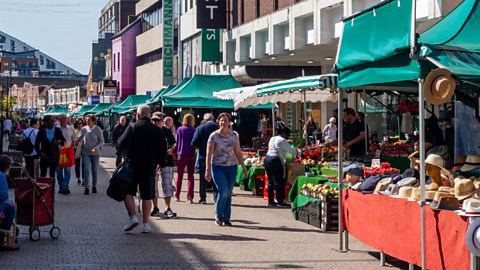What is farming?
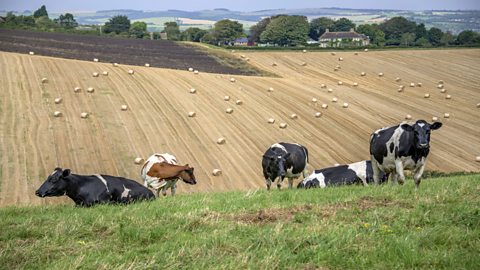
Farming is an activity carried out by people that involves:
Growing and harvesting crops
Raising livestock
Farming provides people with the food and materials they need to live. Most of the UK's rural areas are used for farming.

Watch: Find out more about farming in the UK
Find out more about the UK's different types of agriculture.
Agriculture means farming and it's one of our most important industries, because farming involves rearing animals and growing crops for our food.
Hi, I'm Tianna and I'm at a farm in North Yorkshire and here they have crops and animals.
Livestock farming refers to keeping animals. Behind me is a herd of cows. During the summer, they live and feed in fields, but during the cold winter, they stay here in special pens in a barn.
Cows can produce milk, which I like to put on my cereal. It is also used to make cheese and is an ingredient in many other food products. Dairy cows are kept to make milk, but some cows like these are reared for meat.
There are sheep here too, which are reared from lambs to be eaten like the cows. Some sheep are reared for their wool too, which is used to make clothes.
Some people choose not to eat meat. They're called vegetarians, and some people choose not to eat anything that comes from animals and they're called vegans. They don't have milk from cows or eggs from chickens, and they try to avoid using other animal products.
Some chickens are reared to be eaten. These ones are reared to lay eggs. In the UK, we eat over 35 million eggs a day! Yes - in just one day!
Growing crops is called arable farming. Some land is better for livestock farming and some is better for arable farming. It depends on the soil quality, the climate and the landscape.
The crops grown here include barley and wheat, which are used to make foods such as cereal, bread, pasta and even cookies. The farmer grows a variety of vegetables too. They grow at different times of the year.
Once they've grown, they get harvested, sold to supermarkets and shops and packaged ready for people to buy.
Another type of animal that gets reared to be eaten is not one that you usually think of when you think of farming… but it is eaten a lot. Fish!
There are fish farms across the UK, but this isn't agriculture. It is called aquaculture, because the fish live under or in the water. The farmer creates special pools for them and they are provided with high quality water to thrive in.
Some water, whether its fresh or salty, can contain pollution so it has to be carefully sourced and checked. There are different pools for each stages of a fishes life.
When they are big enough, they are put in the larger pools and regularly fed until they are ready to be caught, sold to market and eaten by customers.
What food do you eat? And are there any farms near to you?
How location affects farming
People farm all over the world, and depending on where they are, grow different crops and raise different animals.
How the land is used for farming depends on:
The climate of the area
The altitude (height) of the area
The type of soil
Landscape features, such as hills, mountains, rivers and lakes.
Farming in the UK
There are three main types of farming in the UK:
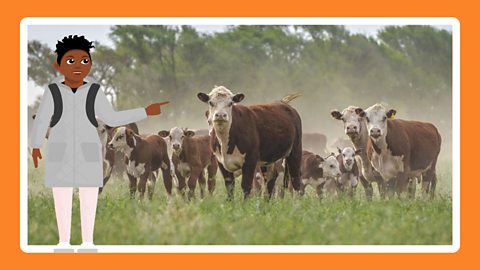
Image caption, Dairy farming
Farms that keep cattle (cows) for milk are called dairy farms. They are usually in wet parts of the country, mostly in the west, where there is enough fresh grass for the animals.
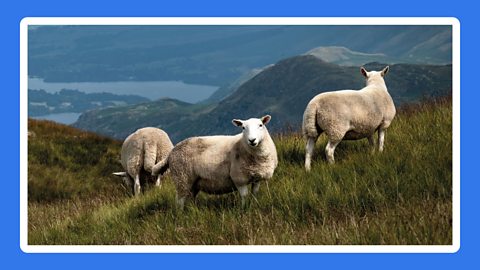
Image caption, Livestock farming
Hilly areas are often rocky and cold, which makes them unsuitable for growing crops. Usually, it is used for sheep and cattle grazing.
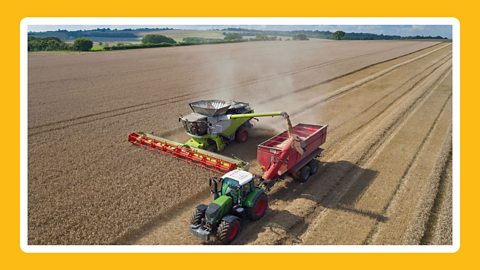
Image caption, Arable farming
Land in flat areas with rich soil full of nutrients is used for growing crops. This is called arable farming and often, farmers use heavy machinery to look after and harvest the crops. Arable farming is usually in the east of the UK.
1 of 3
Some places are suitable for more types of farming, so there can be a mixture of the farmland use.
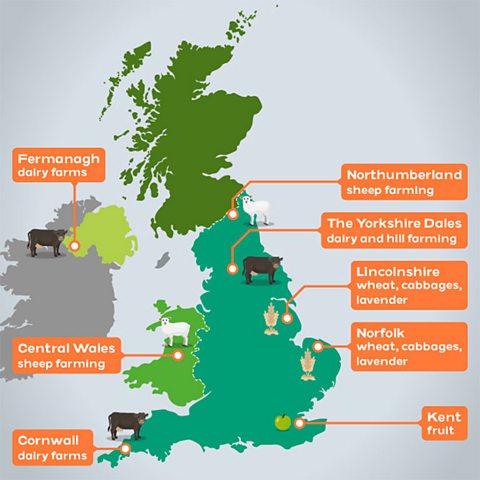
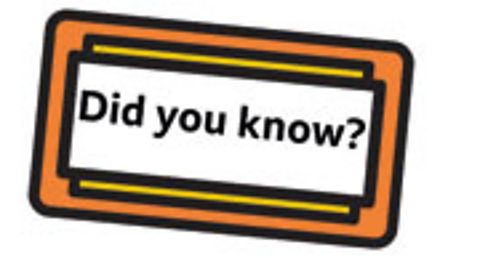
In the UK, there are also water farms found in the sea, lakes or rivers.
For example, in Loch Awe in Scotland, fish such as salmon are produced there.
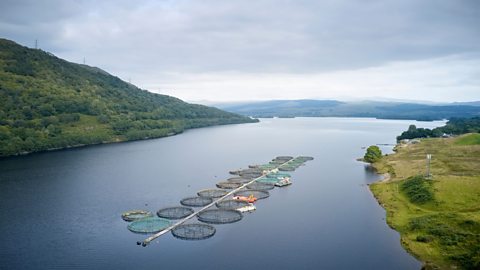
Food journey
The food people eat comes from farms; some of it has been importedFood and goods brought from another country. from different countries.
In the past, people had to rely on their local farms for food with the farmers using roads and waterways such as canals to move their produce.
Today, the roads and railways are used to quickly transport food around the UK.
From the field to the table
Once the crops are ripe and ready, they are harvested. Farmers often use machines to make this quicker.

From the fields, the food is transported to factories and plants. Here, it is sorted and sometimes made into a different product.
- Some foods, such as potatoes or apples, arrive in people's homes looking the same as they were at the farm.
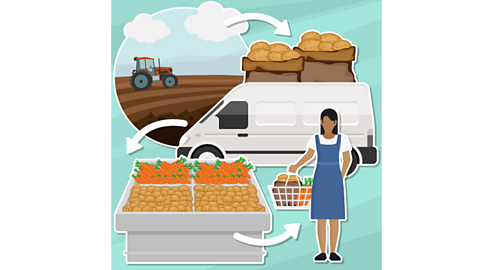
- Other food gets processed in factories and is used to make a new product, such as bread or cheese.
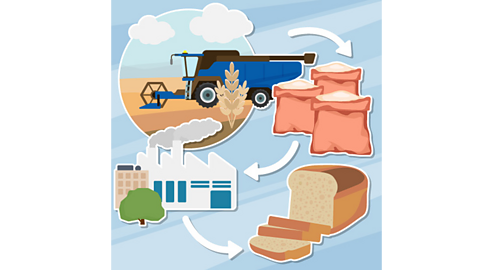
- Some foods such as milk and tinned vegetables are processed in factories to stop it from spoiling.
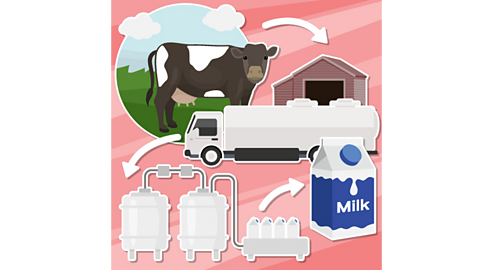

Once the food is processed, it is packed and delivered to either a shop or market.

In the shops, people can buy the food with money.
Impact of farming
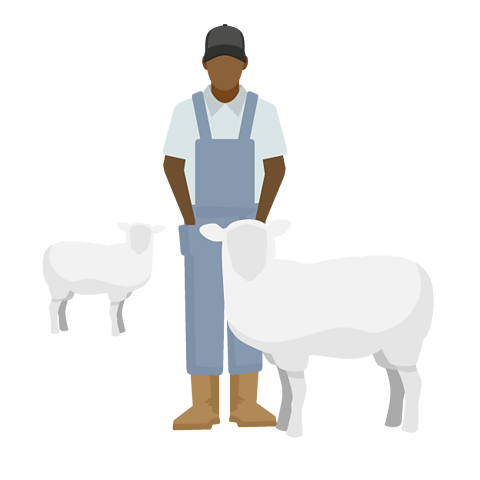
Farmers face many challenges and farming often changes the shape of the land.
Sometimes, water needs to be brought from rivers for irrigation.
Wetlands can get drained to create arable fields.
If the same plants are grown repeatedly in one field, the soil can be stripped of its nutrients.
Some of the chemicals used to protect the crops from illnesses and pests can be harmful to the environment and people.
Today, many farmers use less harmful ways of farming.
In organic farming, chemicals are not used to treat the crops and farmers use natural methods to protect the crops and soil.

Activities
Quiz: Find the place
Quiz: Impacts of farming
SATs preparation resources. activitySATs preparation resources
Get ready for the SATs papers with videos, activities, quizzes and games to refresh your knowledge and practise your skills.

More on Geography of the UK
Find out more by working through a topic
- count15 of 17
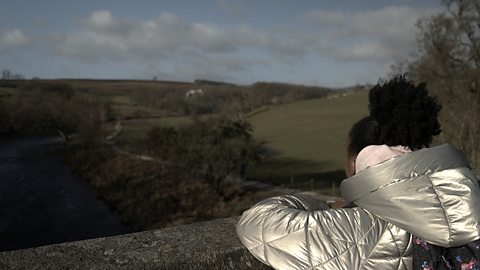
- count16 of 17
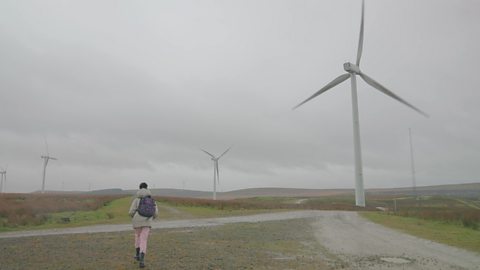
- count17 of 17
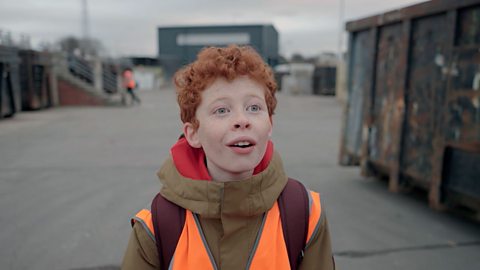
- count1 of 17
